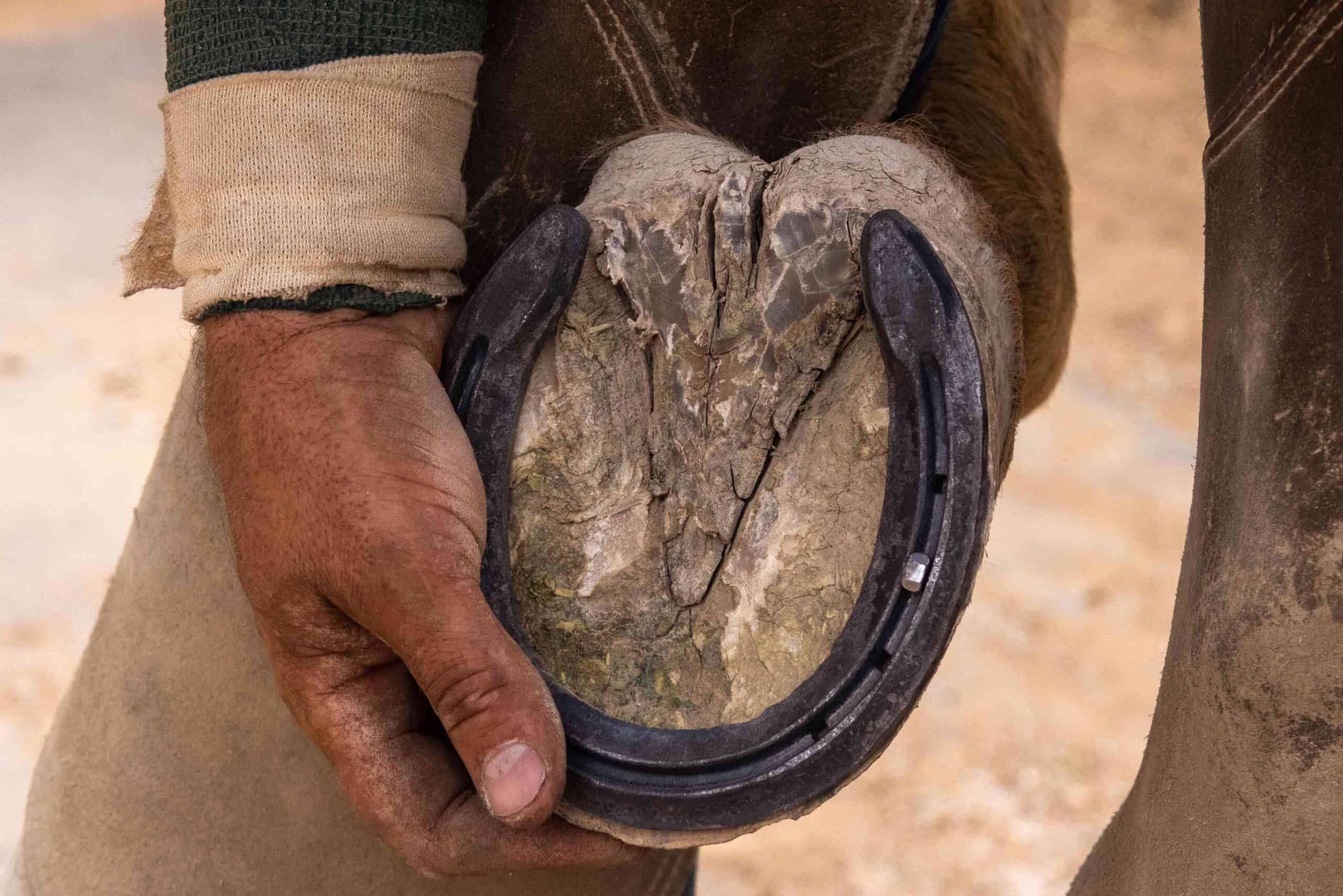How the Horse Got Its Shoe?

Some words have their own life until another word comes to replace them for a variety of reasons. The Armenian Highland was well-known for its horses and horse breeding since antiquity, and cavalry was an important component of the Armenian army.
It is natural, then, that Classical Armenian would have a name for horseshoes. Believe it or not, that was the word loosin (լուսին), which we know to mean “moon.” Those who wanted to shoe a horse used the verb loosnel (լուսնել). Of course, the word loosin for “horseshoe” was inspired by its moon-shaped aspect.
However, something changed sometime after the seventh century A.D., when the Arabs conquered the Armenian Highland and their language also had an impact on the Armenian language. Apparently, the latter lacked a word for “blacksmith,” which Arabic had: baytar. The word was borrowed sometime during the Armenian kingdom of Cilicia (11th-14th centuries) in Armenian as պայտար (baydar), instead of բայտար, which today Western Armenian would have pronounced paydar. How do we know this? Middle Armenian—a sort of vernacular that came into use during that time—had also borrowed the European word baron and turned it into Armenian պարոն (baron “sir”), instead of the expected paron.
This did not stop there. The Armenian termination –ar (ար) is linked to the root arar (արար “creator, doer,” as in khoharar/խոհարար “cook”). Generations later, it appears that someone thought in reverse: if the word baydar is used to mean someone who manufactures a horseshoe, and ar means “doer,” then bayd (պայտ) should mean “horseshoe”! The idea of this unknown someone had enough success, and, over time, the old loosin was confined to the sky and replaced by the otherwise inexistent word bayd to designate a horseshoe. It continues to be part of our lexicon until today.
There is an illustrative and evidence-based anecdote about the use of baydar in Modern Armenian. Ottoman censorship during the reign of Abdul Hamid II (1876-1908) was so asphyxiating that the mention of certain names, including “Hayastan,” was forbidden. Such was also the case of writer Mikayel Nalbandian (1829-1866), the author of several patriotic tracts and poems (including the lyrics of the anthem “Mer Hairenik”). In 1893 researcher Abraham Ayvazian published his three-volume Collection of Armenian Biographies in Constantinople, which included biographies of many cultural figures of the eighteenth and nineteenth centuries. He had to include Nalbandian, and he managed to do it in the second volume (pages 98-143). How did he avoid censorship? Since the word nalband means “blacksmith” in Persian, he simply introduced Nalbandian as… Mikayel Baydarian!
